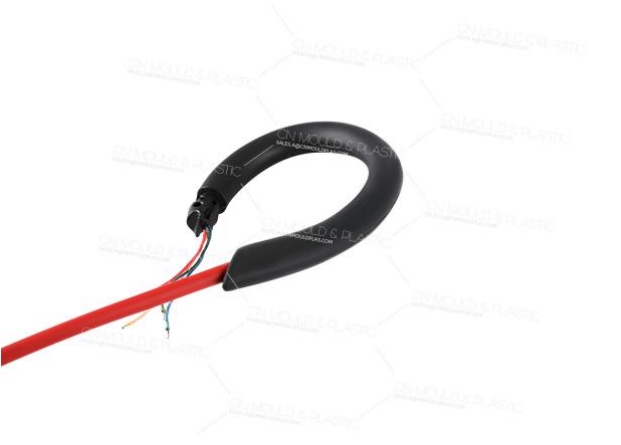Designing how plastic parts look and their structure isn’t just about making them look good and work well. You also need to think about making them easy to mold, avoiding molding defects, and cutting costs. Plus, it should help with designing and making the injection mold—because a bad design can jack up mold design and manufacturing costs big time.
So if you’re designing plastic parts, knowing the no-nos in structure and shape design helps you do it right. If you have to change the design halfway through mold development, that’ll delay the mold delivery and push back your new product launch. To keep part design and mold manufacturing in sync, and make mold design easier without sacrificing part quality or function, mold suppliers and buyers (the folks who need the parts) should review and chat about the part’s shape, structure, and requirements before starting mold design.
There will focuses on the design restrictions that molds impose—aka the "don’ts" in part design. Following these avoids quality issues and makes mold design less of a headache.
1. Keep shapes symmetrical, structures simple, and looks sleek.
2. Pick the right plastic type and grade based on how the part is used. Set size tolerances properly to meet functional needs.
3. Factor in injection molding processes. Design structures and shapes to ensure good appearance and lower molding costs.
4. Make it easy to design and build the mold. Simplify the mold structure and parts to cut costs.
You can’t just randomly set part tolerances. Usually, refer to plastic part tolerance standards to pick the right precision grade. For most parts, use Table 1-1: "Tolerance Grades and Applications for Common Plastic Molding Parts." If your designed tolerances go beyond what’s allowed, the mold can’t make qualified parts—no way around it.

Table 1-1 Tolerance Grades and Applications of Common Plastic Molded Parts
Material Code | Molded Material | Tolerance Grades | |||
Dimension with Specified Tolerance | Dimension without Specified Tolerance | ||||
High Precision | General Precision | ||||
ABS | Acrylonitrile - Butadiene - Styrene Copolymer | MT2 | MT3 | MT5 | |
AS | Acrylonitrile - Styrene Copolymer | MT2 | MT3 | MT5 | |
CA | Cellulose Acetate Plastics | MT3 | MT4 | MT6 | |
EY | Epoxy Resin | MT2 | MT3 | MT5 | |
PA | Nylon - type Plastics | Unfilled | MT3 | MT4 | MT6 |
Glass - fiber - filled | MT2 | MT3 | MT5 | ||
PBTP | Polybutylene Terephthalate | Unfilled | MT3 | MT4 | MT6 |
Glass - fiber - filled | MT2 | MT3 | MT5 | ||
PC | Polycarbonate | MT2 | MT3 | MT5 | |
PDAP | Polydiallyl Phthalate | MT2 | MT3 | MT5 | |
PE | Polyethylene | MT5 | MT6 | MT7 | |
PESU | Polysulfone | MT2 | MT3 | MT5 | |
PETP | Polyethylene Terephthalate} | Unfilled | MT3 | MT4 | MT6 |
Glass - fiber - filled | MT2 | MT3 | MT5 | ||
PF | Phenolic Plastics | MT2 | MT3 | MT5 | |
MT3 | MT4 | MT6 | |||
PMMA | Polymethyl Methacrylate | MT2 | MT3 | MT5 | |
POM | Polyoxymethylene | MT2 | MT4 | MT6 | |
MT4 | MT5 | MT7 | |||
PP | Polypropylene | MT3 | MT4 | MT6 | |
MT2 | MT3 | MT5 | |||
MT2 | MT3 | MT5 | |||
PPO | Polyphenylene Oxide | MT2 | MT3 | MT5 | |
PPS | Polyphenylene Sulfide | MT2 | MT3 | MT5 | |
PS | Polystyrene | MT2 | MT3 | MT5 | |
PSF | Polysulfone | MT2 | MT3 | MT5 | |
HPVC | Rigid Polyvinyl Chloride (without Plasticizer) | MT2 | MT3 | MT5 | |
SPVC | Flexible Polyvinyl Chloride | MT5 | MT6 | MT7 | |
VE/MF | Amino Plastics and Phenolic Plastics | Inorganic Filler - filled | MT2 | MT3 | MT5 |
Organic Filler - filled | MT3 | MT4 | MT6 | ||
(Common mistakes when designing product shapes without considering key factors)
1. When designing the product shape, you must consider:
Whether it over-complicates the mold structure
Whether it increases mold design/manufacturing difficulty and costs
Whether it facilitates mold design and production
2.Don’t forget how mold factors affect appearance quality, like: Gate location settings, Mold manufacturing precision.
The shape design must be injection-molding-friendly. If a product can only be molded under extremely strict conditions, that’s a design flaw. For complex shapes, thick walls, or tricky molding:
· Use combined structures
· Mold components separately then assemble
· Try two-stage molding
· Add inserts
Poor design causes issues like:
· Shrinkage marks & dents
· Weld lines
· Deformation
· Stress concentration
· Molding/demolding difficulties
Example: Asymmetrical parts deform from uneven cooling, hurting performance. Design for smooth molding to avoid these flaws.
· Ensure fittings are reasonable—no interference allowed
· Maintain single-sided clearance between 0.1-0.5mm
· Design clearances for easy mold modification (no welding on molds!)

